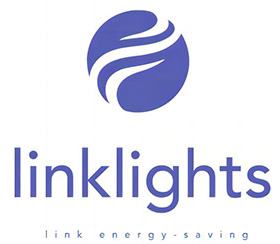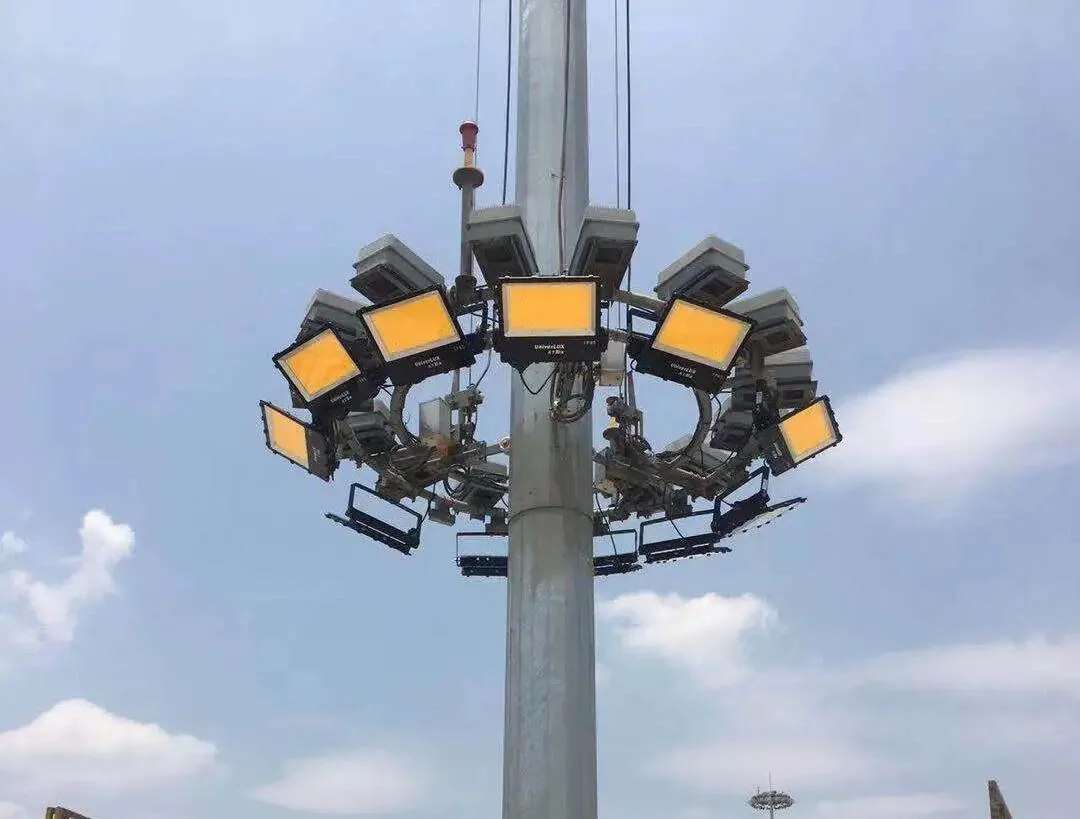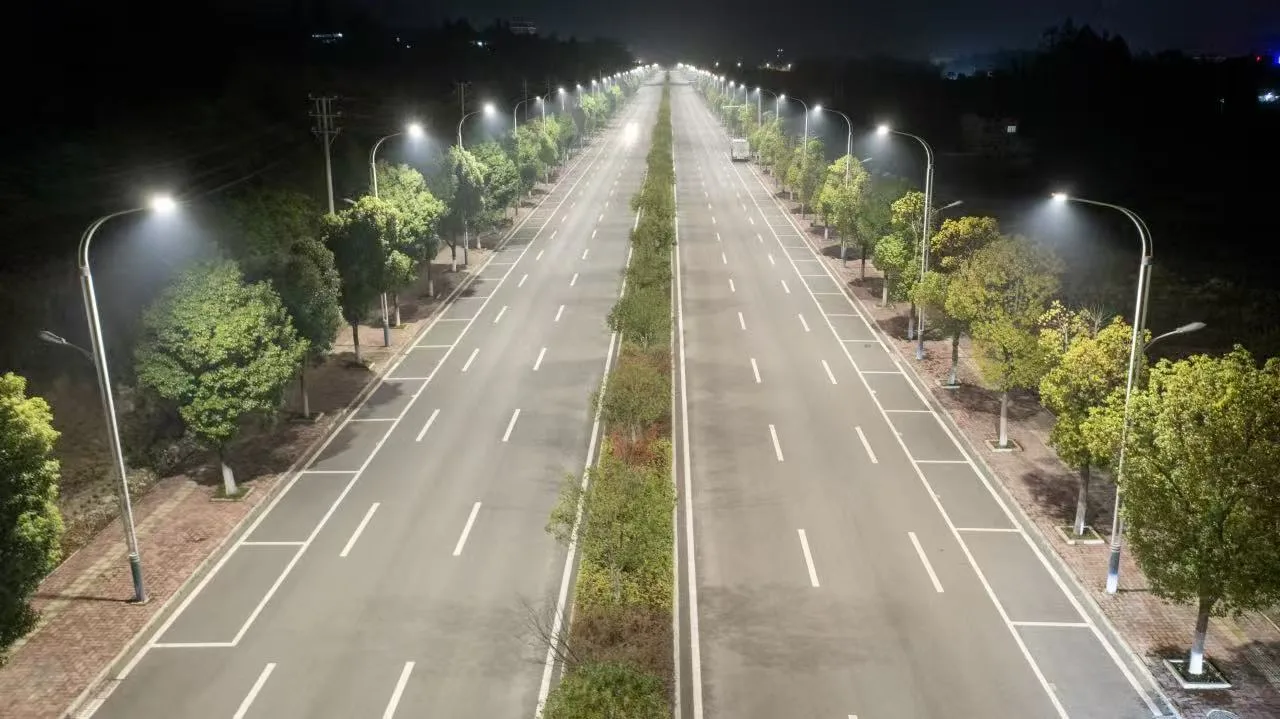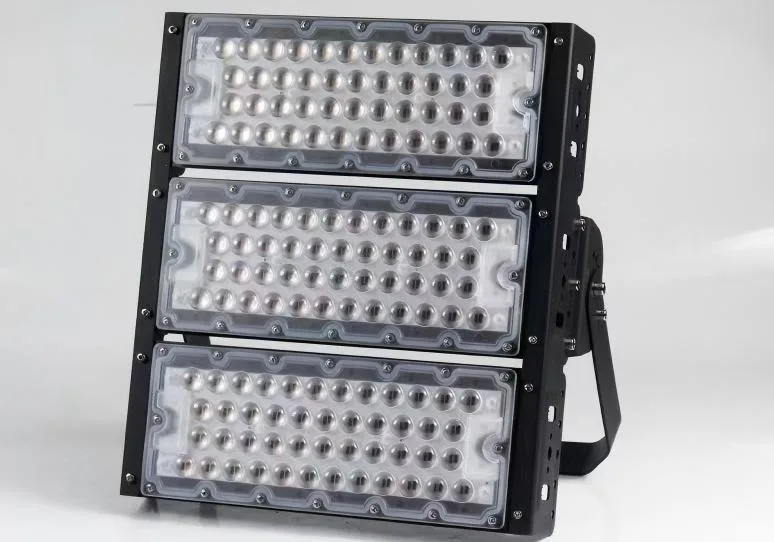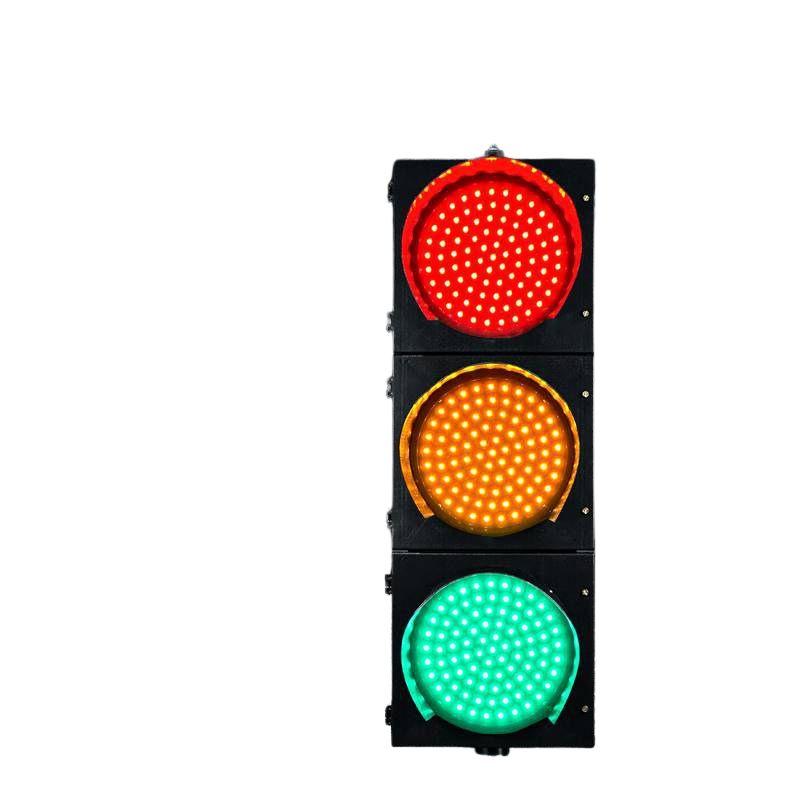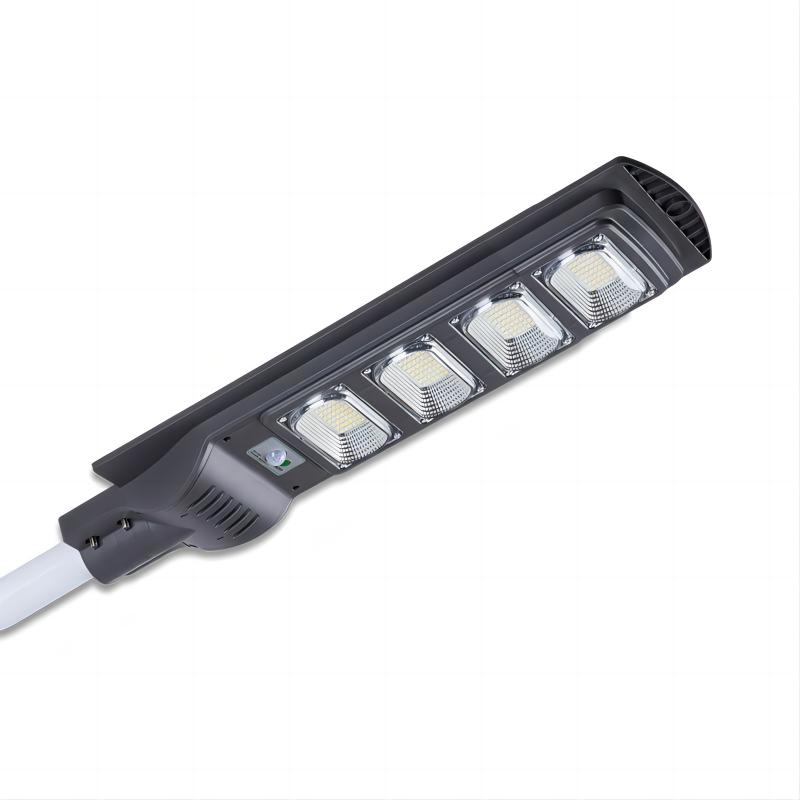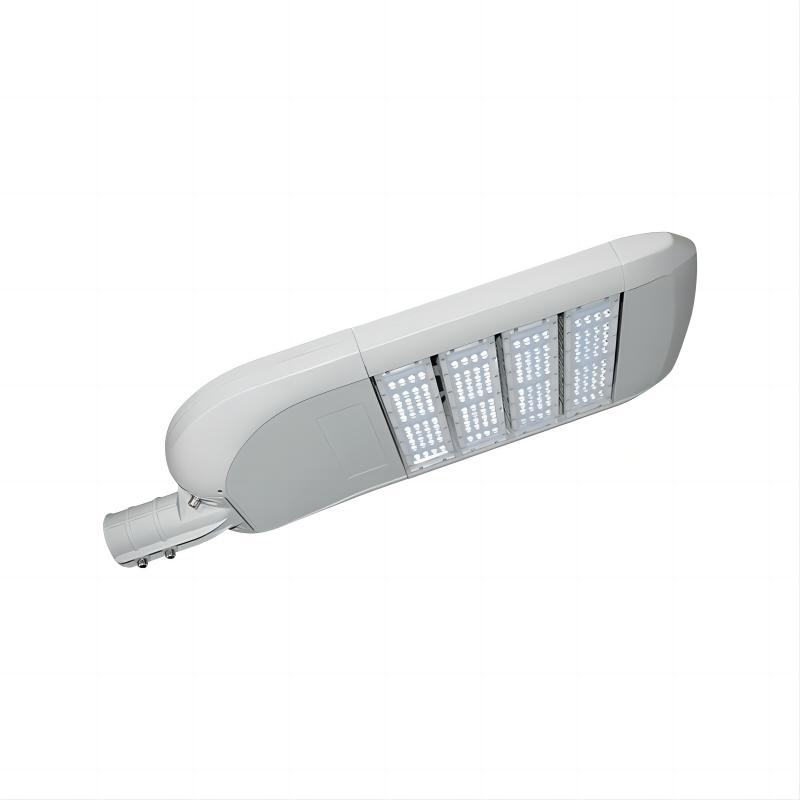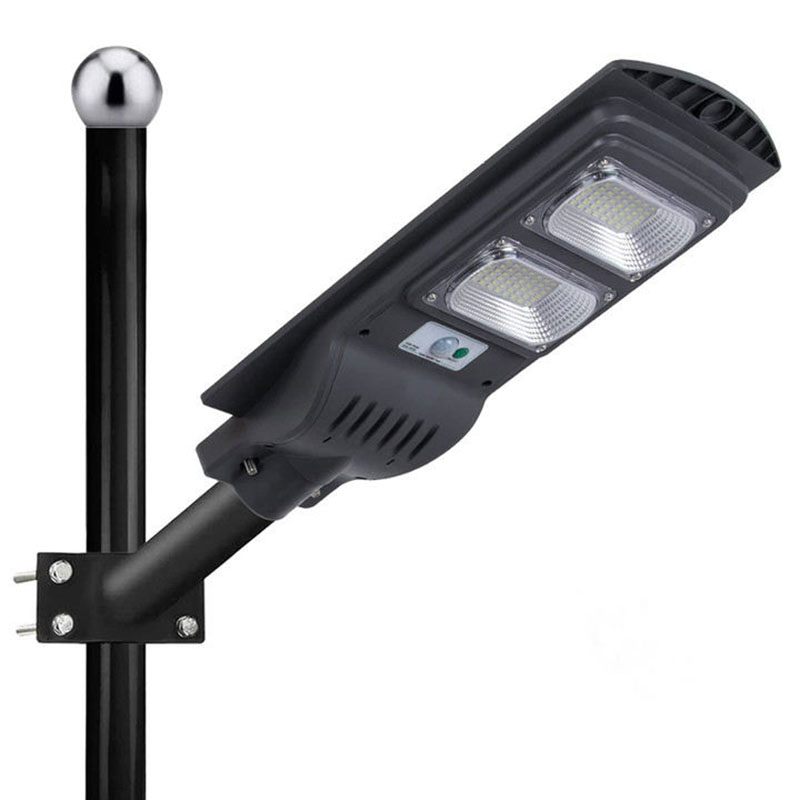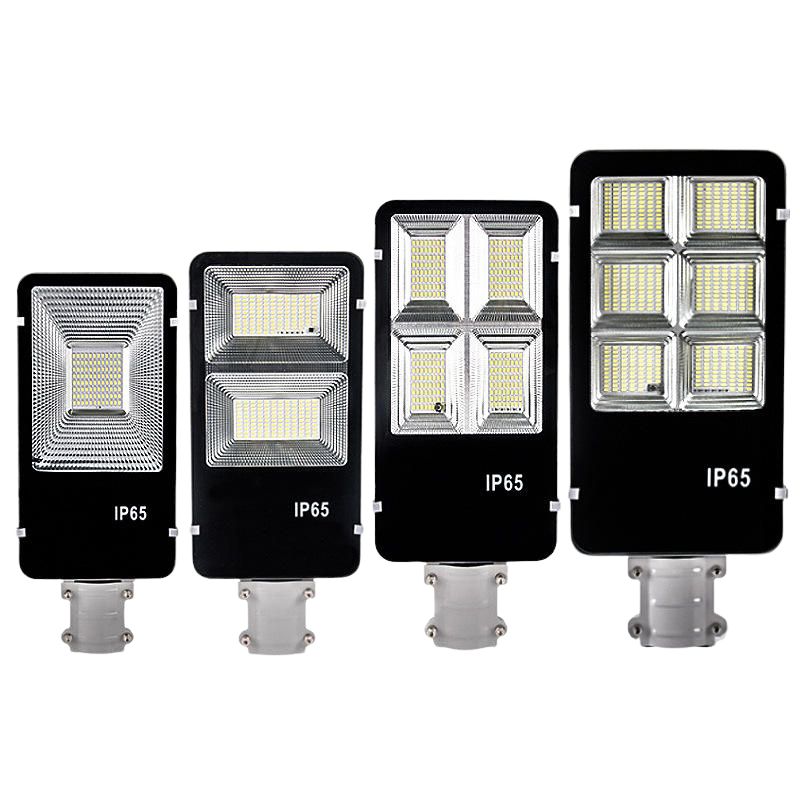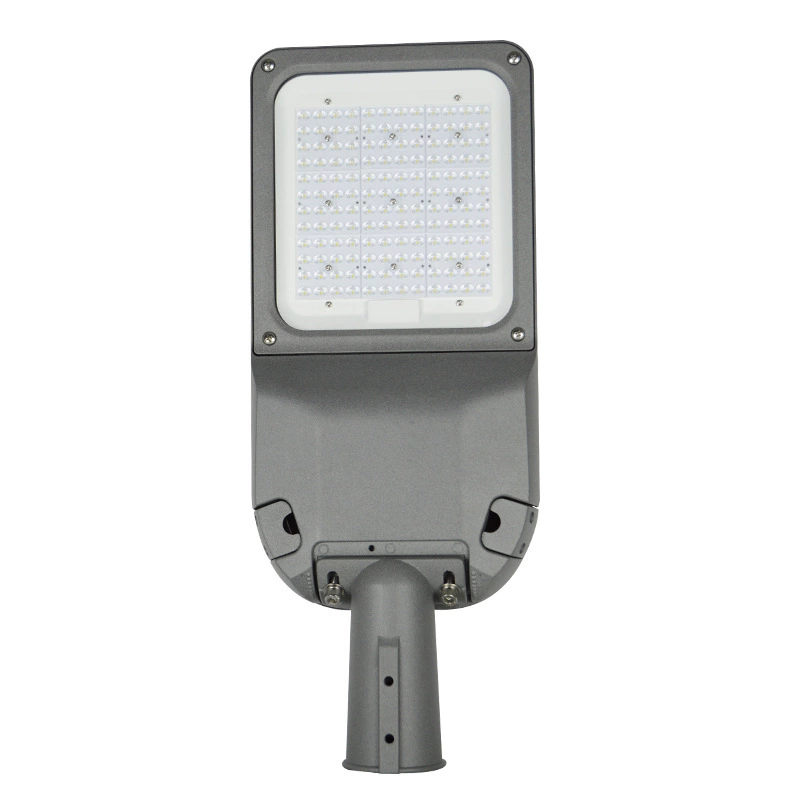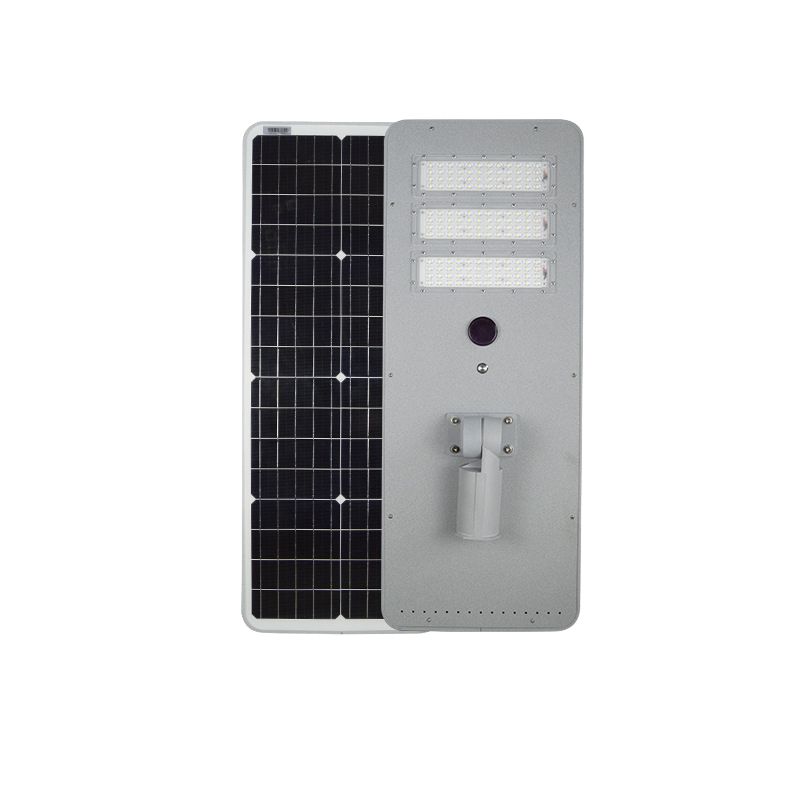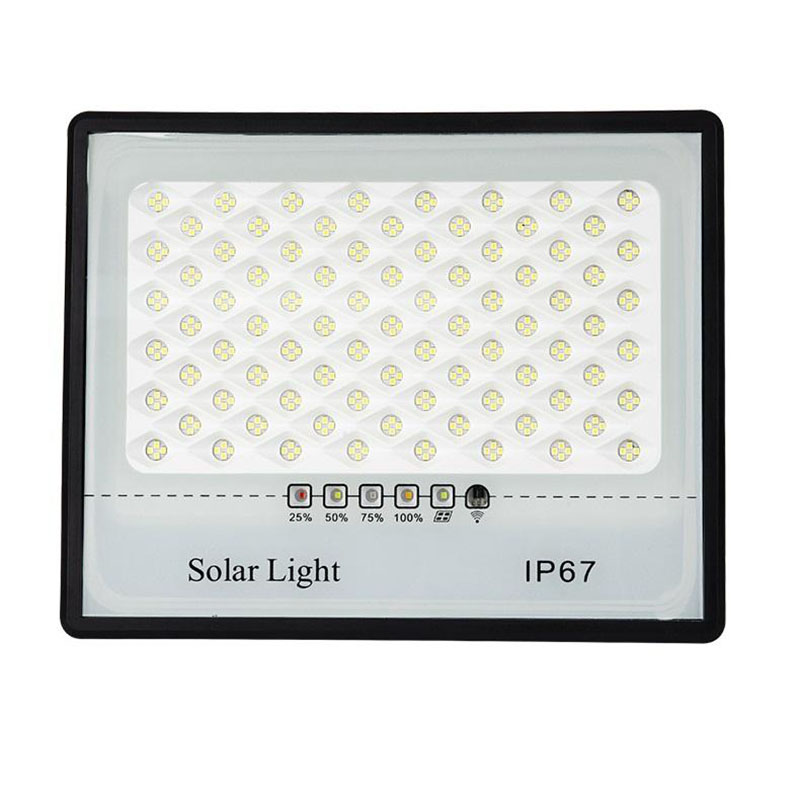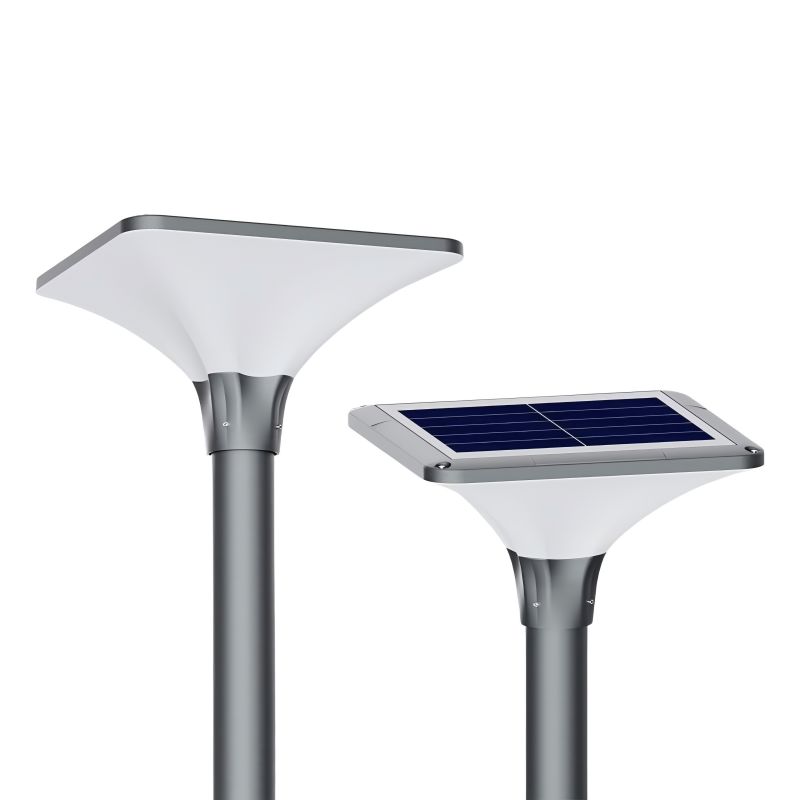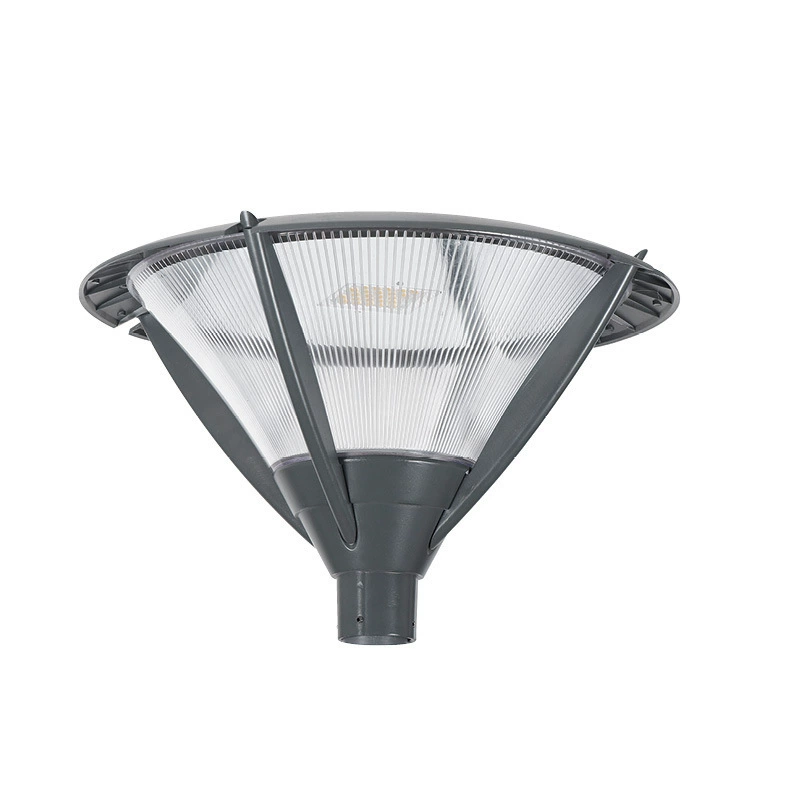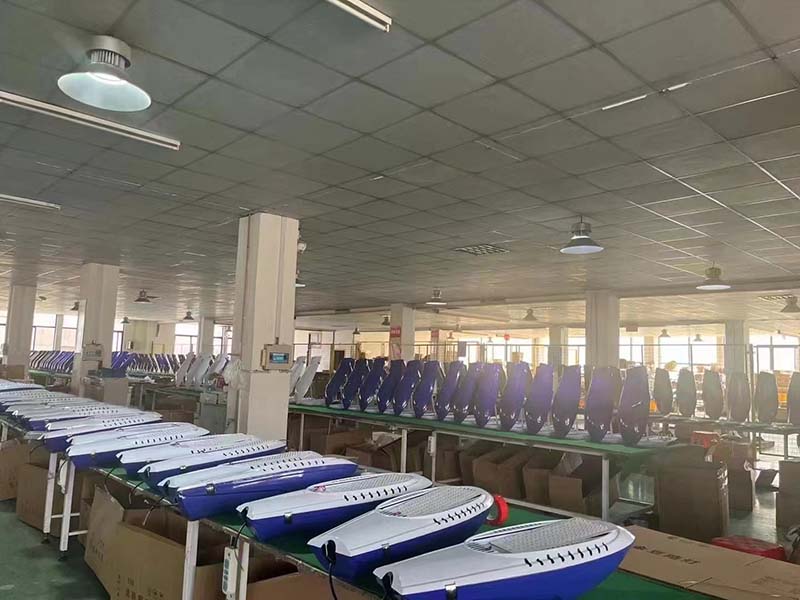Introduction
0-10V dimming technology is a way to control the brightness of lighting devices using a 0 to 10-volt DC signal. This technology is widely used in commercial outdoor lighting, industrial facilities, and street lighting systems, especially in street lights led, to save energy and provide smart control by adjusting the led lamp brightness accurately. As the global demand for energy-saving and sustainable cities increases, the importance of 0 to 10v dimming technology in the lighting industry continues to grow.
This article will explain in detail the working principle, advantages, and applications of 0 to 10v dimming technology, and compare it with other dimming technologies to help you understand how to use this technology effectively in different lighting projects.
Basics and Working Principle of the 0 10v dimming system
What is 0 to 10 volt dimming?
0 to 10v dimming technology is a method to control the brightness of lights by changing the voltage between 0 and 10 volts. When the voltage is 0V, the light is off; when the voltage is 10 volt, the light is at its brightest. This control is done by low voltage dimmer, led light driver, and lighting equipment through signal transmission.
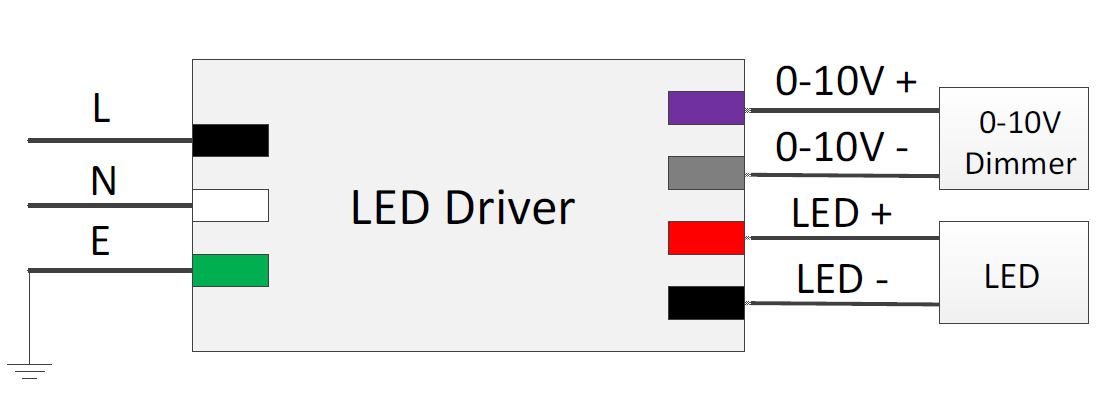
How does 0-10v dimming work
A 0 10v dimming system uses a 0 10v dimmer switch sending an 0-10v analog input over dedicated 0-10v wiring (two low-voltage control conductors). The dimmer adjusts the LED driver’s output current, so brightness tracks the control voltage: 10 V ≈ 100%, ~5 V ≈ 50%, and 0 V turns the fixture off. With the right 0 10v dimmable driver and dimmable led fixture, this linear method delivers smooth, flicker-free results and helps avoid “led lights flickering on dimmer.” For installation, use rated 0 10v dimming wire (or 0-10v dimming cable, e.g., 12/2 mc with dimming wire) and, if needed, a 0 10v dimming controller for group control or sensor inputs.
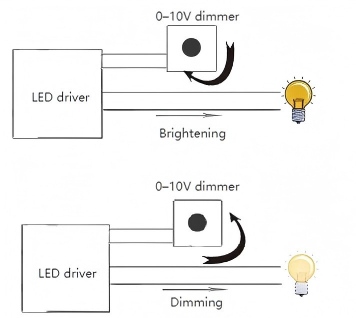
Advantages of 0 10 v dimming Technology
Deep Energy Saving and Reduced Maintenance Costs
The dimming 0-10vsystem can adjust the brightness of LED street lights based on different environmental changes, significantly reducing energy waste from traditional “full-power” lighting systems. For example, when traffic decreases at night, the voltage can be reduced to 3-5V, lowering brightness by 30%-50%, and saving 40%-60% of nighttime energy. Unlike traditional streetlights that waste power when on standby or slightly lit, the 0-10V system completely turns off the LED lights when the voltage drops to 0V, making it especially suitable for low-traffic areas like suburbs and rural areas.
Linear Dimming for Smoother Lighting Experience
The 0 10v dimming system is one of today’s linear lighting solutions, delivering truly linear dimming that ensures smooth transitions in LED brightness without flicker or stepping. This is critical for pedestrians and drivers, preventing the perception of a flickering street lamp and the sudden brightness changes sometimes associated with traditional PWM dimming. Brightness can be set per scene—for example, 80% in commercial districts and 60% in residential areas—and the system can pair with light sensors to adjust automatically at sunset or sunrise. It also works across dimming light fixtures, enabling natural, comfortable, and energy-efficient roadway illumination.
Strong Compatibility for Various Lighting Scenario
The 0-10V dimming system has high compatibility, meeting the diverse needs of street lighting. Whether it’s a led lighting 100wmain road light, a 150w ledsecondary road light, or a 20W courtyard light, as long as the LED driver supports the 0-10V signal, it can be connected to the system. The system can also work with time switches, microwave radar sensors, and other smart devices to enable flexible timed dimming, automatic adjustment, and remote zone control, fitting different smart lighting needs.
Simple Structure, High Reliability, and Easy Maintenance
The system has a simplified design and only requires two signal wires (+10V wire, ground wire) to connect the dimmer and driver. Compared to traditional DALI or DMX digital dimming systems, this reduces wiring complexity and minimizes the risk of wiring errors or aging lines. With fewer core components, troubleshooting is much easier. Maintenance personnel can quickly locate problems by measuring the 0-10V signal voltage, reducing maintenance time andlamp cost.
Longer Lamp Lifespan and Lower Replacement Costs
The 0-10V dimming systemreduces the workload of LED lights by adjusting the current, avoiding the full-load operation of LEDs for long periods. This reduces heat and slows down light decay, extending the lifespan of led bulbs. The LED streetlights’ lifespan can theoretically be extended from 50,000 hours to 60,000-70,000 hours, lowering the cost of frequent led light replacements. Additionally, the 0-10V system uses linear current adjustments, which reduce the wear and tear on electronic components compared to traditional PWM dimming systems, making the drivers more durable and better able to withstand a wide range of temperatures, thus reducing the likelihood of failure.
Applications of 0-10V Dimming
Smart street lighting system project
0-10v dimming technology is widely used in street lighting systems for smart cities. As part of modern lighting automation systems, it enables adaptive control that boosts energy savings and lowers maintenance costs. With sensors on street lights and centralized smart controllers, brightness can be automatically adjusted based on traffic flow, time of day, or ambient light, ensuring efficient, comfortable illumination.
Commercial and Industrial Facilities
In largeshopping mall exterior, city lights warehouse, and industrial mart, the 0-10V dimming system can adjust lighting brightness in real-time based on activity needs or the movement of people, ensuring that the lighting meets safety standards while also saving energy.
Office Lighting and Indoor Environment Control
In office buildings and meeting rooms, 0-10V dimming can adjust the brightness based on the environment and task needs. For example, in meeting rooms, the lighting can be adjusted according to the light requirements to improve comfort and efficiency.
0-10v dimming dimmable standard and Types
The application of 0-10V dimming technology in street lighting depends on “standardized adaptation,” which means selecting the appropriate standards and types based on regional electrical regulations, led lamp driver characteristics, and outdoor environment requirements. International standards such as IEC and ANSI define the electrical characteristics, signal logic, and interface requirements, ensuring compatibility and stability between devices. Below are the main standards:
IEC 60929 Standard (General Lighting)
Signal Logic: Uses “Current Sink” mode, where the streetlight LED driver provides a 10V voltage, and the dimmer adjusts brightness by absorbing current, ensuring stable signals and preventing voltage fluctuations from causing brightness issues in streetlights.
Brightness Relationship: At 10V, brightness is 100%, and at 1V or below, brightness is at its minimum (usually ≤5%). While 0V does not fully turn off the light, most streetlights set 0V to a low light level (3%-5%), meeting the night security needs.
Load Compatibility: Each driver’s signal input current consumption must be ≤2mA, supporting multiple lights to be adjusted at once, making it suitable for large-scale lighting control.
ANSI E1.3 Standard
Signal Logic: Uses “Current Source” mode, where the dimmer provides a 0-10V signal, and the streetlight driver receives the signal and adjusts brightness. This mode is suitable for scenarios requiring frequent brightness adjustment, such as holiday light displays.
Compatibility: The signal logic of ANSI is completely different from IEC and cannot be mixed. If the controller and driver are mismatched, it could result in reverse brightness issues (e.g., at 10V, brightness is minimum; at 0V, brightness is maximum). A conversion module is needed for compatibility.
6.Comparison with Other Dimming Technologies
0-10V Dimming vs DALI Dimming
What is DALI?The DALI protocol is a communication interface standard for lighting control devices, which allows for individual control of each light, enabling control over brightness, color temperature, color, etc. It also supports grouping and scene control for lights.
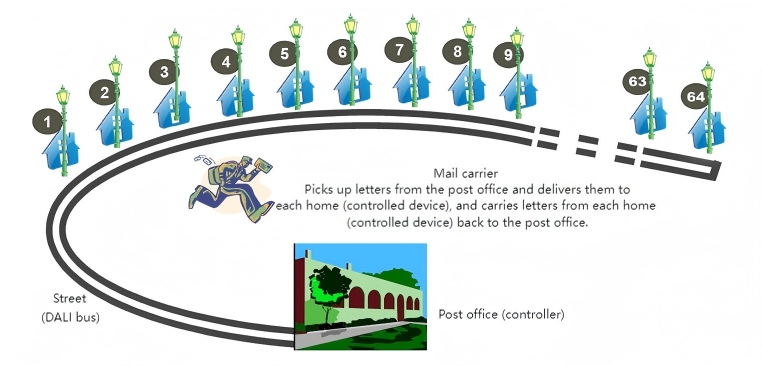

The DALI system is defined as:
A maximum of 64 devices on a single DALI line (with independent addresses)
Up to 16 groups (group addresses)
Up to 16 scenes (scene values)
Advantages:Precise dimming, allowing for individual light control,Two-way communication,Easy maintenance,Strong anti-interference capability
Disadvantages:High cost;Complex setup
0-10V dimming is an analog system. While it offers a broad dimming range, it may not be as precise or feature-rich as DALI. However, due to its simplicity and low cost, 0-10V remains a popular choice in most lighting projects.
0-10V Dimming vs DMX Dimming
What is DMX Dimming?DMX stands for Digital MultipleX, which refers to multi-channel digital transmission. The light levels range from 0 to 100%, divided into 256 levels. The control system can achieve 256 levels of brightness for R, G, B, and W, truly enabling full-color control.
Advantages:Precise dimming with rich effect transitions
Disadvantages:Complex wiring and address assignment,Complicated setup
Compared to 0-10V dimming, DMX offers more control options and higher precision but is more complex to set up and configure. It is best suited for highly customized lighting scenarios.

How to Choose the Right Dimming Technology
When selecting the appropriate dimming technology, businesses and urban planners must make decisions based on project requirements, budget, energy efficiency goals, and system complexity. The 0-10V dimming system, with its high cost-effectiveness, ease of use, and compatibility, is suitable for most commercial and municipal lighting projects.
Factors to Consider
Energy Efficiency Requirements: If the project focuses on energy savings, the 0-10V dimming system is a good option, especially for environments where dynamic brightness adjustment is needed. For example, in outdoor street lighting, where brightness can be lowered during late-night hours when traffic is minimal, the 0-10V system can efficiently reduce energy consumption while maintaining adequate lighting levels. This is ideal for both residential and commercial applications aiming to reduce their carbon footprint.
Ease of Installation: For large-scale projects, the 0-10V dimming system offers straightforward installation, significantly reducing setup costs and time. This makes it an attractive choice for municipal and large commercial buildings, where fast and efficient installation is a priority. Compared to more complex systems like DMX or DALI, which require detailed wiring and configuration, the 0-10V system minimizes installation hurdles. Its simplicity allows for quicker deployment, especially in projects with tight timelines.
Budget Constraints: The low cost of 0-10V dimming systems makes them ideal for lighting projects with limited budgets. Because it does not require expensive control infrastructure or complex setup procedures, it offers a budget-friendly solution without compromising essential lighting performance. This affordability is particularly valuable in public sector projects, where budget restrictions are common, or in smaller commercial spaces where advanced features are not necessary.
Overall, 0-10V dimming technology offers a balance of affordability, energy efficiency, and ease of installation, making it a versatile choice for a wide range of applications. However, it may not provide the advanced features and precision of systems like DMX or DALI, which are more suited to projects requiring intricate control and custom effects. Therefore, businesses and city planners should weigh these factors to determine the best solution based on their specific needs.
FAQ
Can the 0-10V dimming system be compatible with all LED lights?
The 0-10V dimming system is widely compatible with many LED lights, but to ensure the best performance, it is recommended to choose LED drivers that are compatible with 0-10V dimming.
Is the maintenance cost of the 0-10V dimming system high?
Due to its easy installation and operation, the maintenance cost of the 0-10V dimming system is low.
What lighting applications is the 0-10V dimming system suitable for?
It is suitable for office lighting, street lighting, industrial facilities, commercial retail, and multifunctional spaces.
What is the actual transmission distance of the 0-10V signal?
The transmission distance depends on the path of the signal wire, material, power signal current, and number of power sources. For example, using a 1.5mm² copper wire with an Ouches dimming power supply, the transmission distance can be up to 500m with a voltage drop not exceeding 0.1V.
Will reversing the 0-10V power signal line cause damage?
No, the power will stay on or off, but it will not be controlled.
Conclusion: Future Outlook for 0-10V Dimming Technology
With the advancement of smart city development and strengthened energy-saving goals, 0-10V dimming technology will play a greater role in the future lighting industry. With its energy-saving benefits, flexibility, and cost-effectiveness, the 0-10V dimming system will continue to be widely used worldwide, driving the rapid development of green lighting and smart cities.
